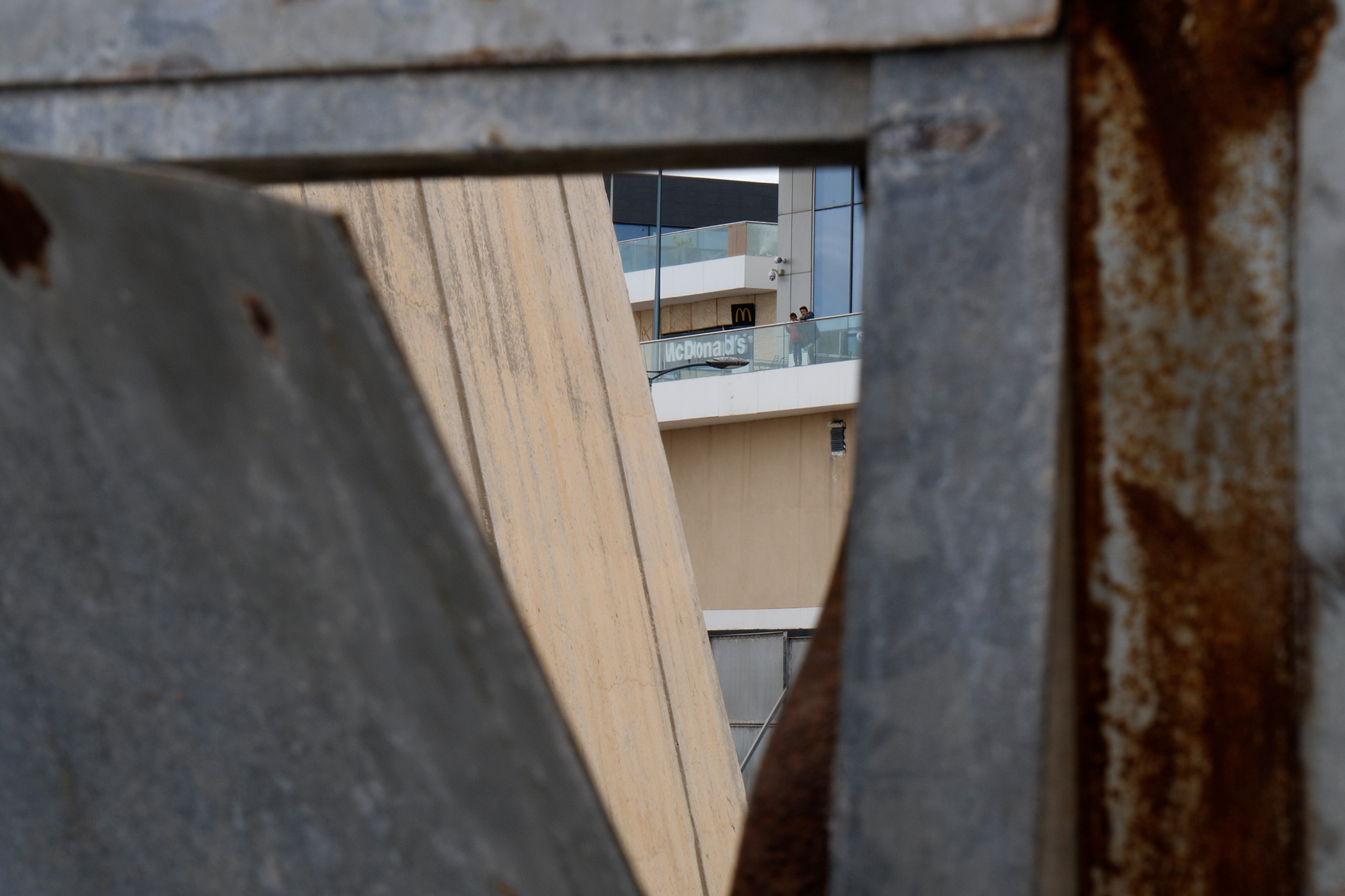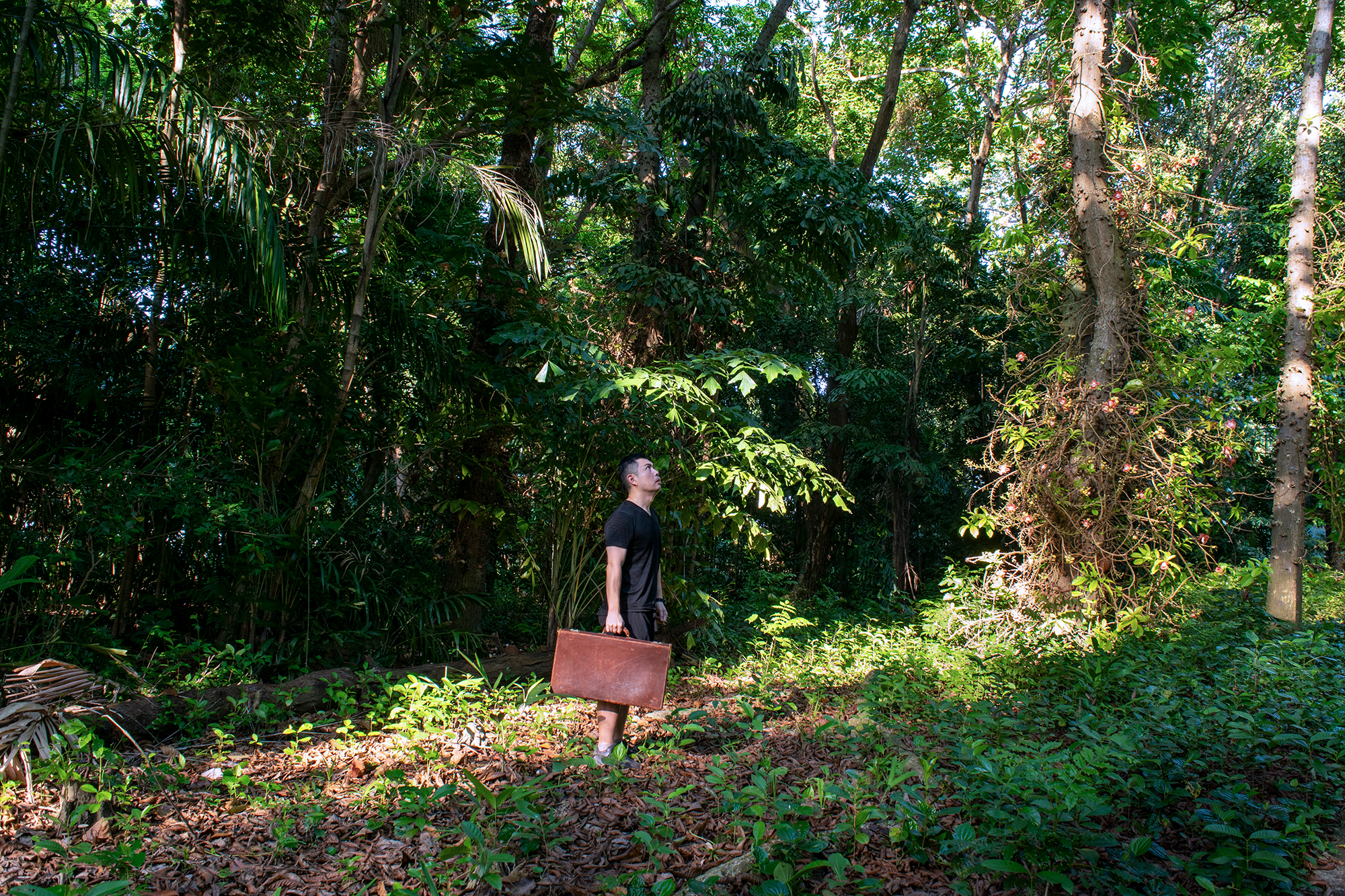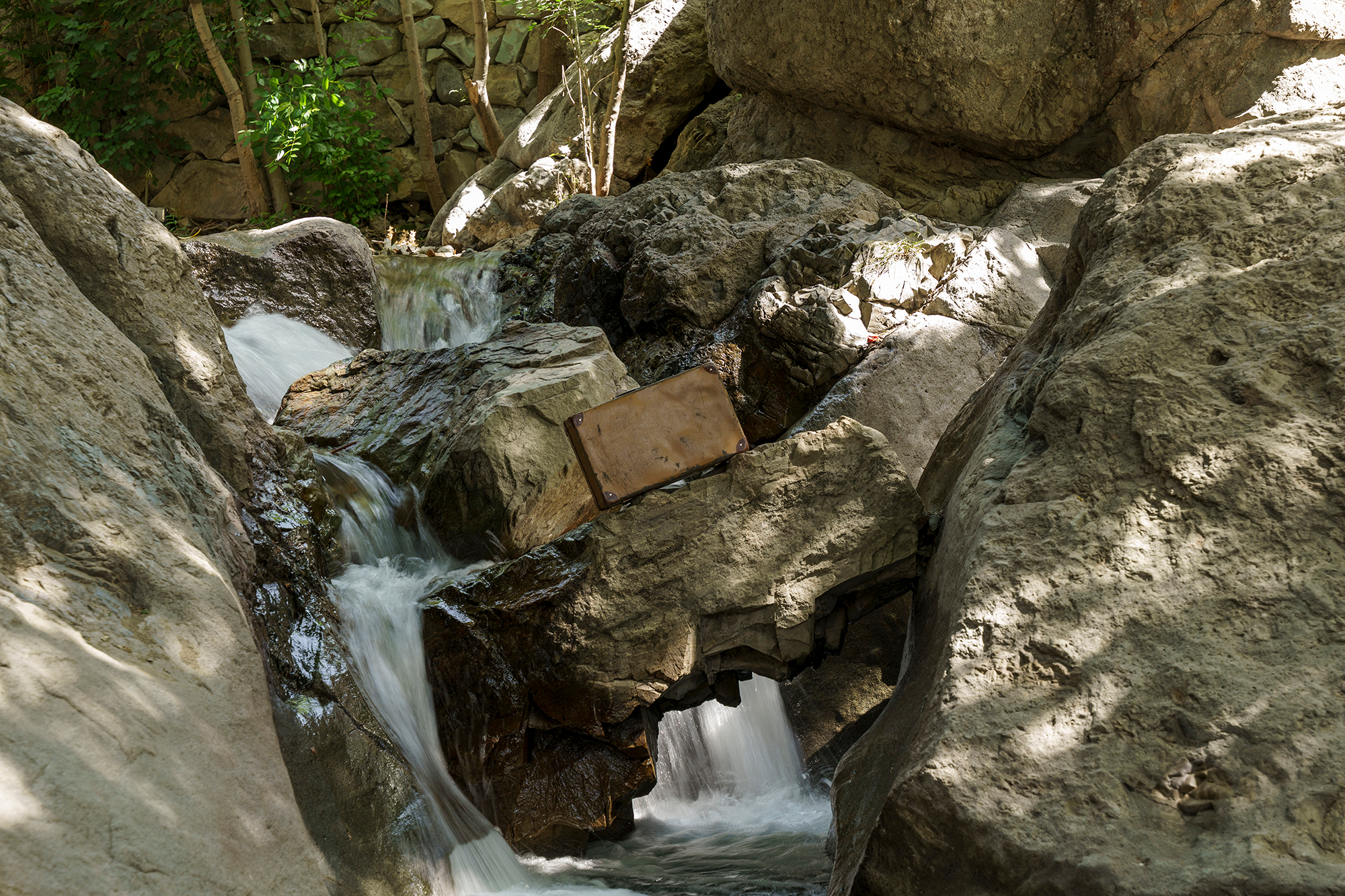For the Platforms Project in Athens, the Museum of Contemporary Cuts presents an international exhibition consisting of two works by two different artists strategically placed in opposition to one another. The two artists, Lanfranco Aceti and Yiannis Melanitis, challenge each other through a series of colloquia that, while rooted in incommunicability, isolation, and censorship, nevertheless speaks of contemporary notions of freedom, democracy, and understanding.
Both Aceti and Melanitis base their practice on highly conceptualized and semiotic interpretations of reality. Steeped in a social understanding of art as action going beyond aesthetic etiquette, this conceptualization related to their respective practices is conceived as an intentional betrayal of typical ideologies, conventions, and good manners. “There should be nothing civilized about art,” said Aceti while talking about his work Last Drop with Melanitis (his artistic counterpart) and the Platforms Project’s artistic director, Artemis Potamianou.“Art that is not uncouth, vulgar, and in your face is just another pandering to the aesthetic of the body politic and to corporate narcissistic and golden egotistic self-representations. This sycophantic art can only be perceived as an obsequious hierarchical anallingus to moralistic self-righteous ideologues and to those who safeguard and defend aesthetic canons worldwide.” Beyond contemporary simplistic Gramscian re-interpretations of duty and of social participation, Aceti’s explanation expands upon his Adornoian philosophical approach as a means of navigating and actively acknowledging a contemporary context defined by post-capitalistic frameworks which have made it all but impossible to participate without being exploited.
Melanitis spoke of “the importance of re-modeling political discourse in the realm of a modernism that never came of age—an unfinished process. In this approach the artist—beside from contextualizing a practice to be followed—has to define the ‘exact armory’s paraphernalia.’” His scatology-escatology series formalize a careful analysis of an artistic practice where the artist designs through philosophy (correlating his practice to the Leonardo Da Vinci’s sketch of a valve flush toilet or Marcel Duchamp’s formula arrhe/ merdre=art merde). Similar to Alfred Le Petit’s and Jules Eugène Lenepveu’s caricatures of Émile Zola where the writer defecates while writing texts, the point where scatology becomes political is signified through the creation of a parallel relationship made between political stances and the artist’s practice. Seemingly a traditional portrait, A Portrait Study of the Chromatic Oscillation Βetween Barium Yellow and Ultramarine Blue, Melanitis’s oil painting is a chromatic palette challenge executed in the atelier, which oscillates between two chromatic limits through a row of colors while having to keep the image ‘intact.’
Extracting from their own very personal experiences of the contemporary globalized reality of failure and its constant mythologization of the political collapse at national and supranational levels, the two artists simultaneously challenge and corroborate one another. This back and forth between the artists is precipitated and ignited by the mutual desire to create an unorthodox archive of the institutional fake facts and aesthetic propaganda that is—with the aid of the ricin oil so willingly provided by conniving aesthetic institutions—shoved down the throats of viewers.
Aceti and Melanitis transpose the Baudrillardian concept of conspiracy of art from a philosophical and theoretical understanding of life to a Pasolinian reforging of reality which, deprived of myths, is situated in front of the viewer butt naked—for all to see. It is the viewer, in the understanding of the artist(s), who can no longer be communicated with whenever s/he is outside the civilized political-social-financial frameworks. This is a viewer, particularly within international contexts, who is constantly described as poorly educated, ignorant, and backwards simply because s/he no longer fits within the positively enforced representation of collapsing states and cannibalizing financial institutions. Dejected and rejected, this viewer stands outside the divide that exists between apparata of representation and the represented. This particular viewer, abandoned and no longer recognized as ‘other’ but as the discarded remnant of contemporary necropolitics, is condemned to a status of ignorant sub-human proletariat, unidentifiable because no longer financially (or otherwise) part of twenty-first century societies.
Aceti’s work is, therefore, based on the exploration and the analysis of the archive through an exploration of the image, which is recontextualized in the structure of contemporary exploitative social frameworks. This is an aesthetic action that speaks of processes of prostitution, abuse, and fake socio-political dreams.
Melanitis’s work is a meticulous study of philosophy at its limits, stopping at a point where it may be dispersed into art. In this technique, ideas predate any artistic methodology that often makes the execution of the artwork strenuous. His conceptualism refers to ‘information’ instead of ‘ideas,’ deriving from a framework delineated as neo-modernistic.
Both artists refer to their work in relation to the possibility and impossibility of sharing experiences, and to the communicability and incommunicability of contexts and emotions located outside shared entanglements. Their works and actions ask of the viewer to feel and engage the world of hardship outside the golden walls of personal financial and political clout; in order to see where that money is coming from and access an anger which is rooted in a twenty-first century aesthetic that refuses to gild the lilies.
Artists Biographies
Lanfranco Aceti works as an artist, curator, and academic. He is the director of Arts Administration at Boston University. He has done a range of exhibitions and public space interventions at renowned international venues including Tate Modern, MoMA, and the ICA, London among others. He is Editor in Chief of the Leonardo Electronic Almanac (MIT Press, Leonardo journal), for which he has edited more than twelve volumes. He worked as the director of Kasa Gallery in Istanbul, where he exhibited a range of innovative artworks including 75Watts by Revital Cohen and Tuur Van Balen, acquired by MoMA and Paolo Cirio’s Loophole4All, awarded the 2014 Golden Nica, Prix Ars Electronica.
Recently he performed Hope Coming On at the Museum of Fine Arts Boston. He has exhibited numerous personal projects including Car Park, a public performance in the UK; Who The People? an installation artwork acquired in its entirety by Chetham’s Library and Museum in Manchester; The Annunciation a performance; and Sowing and Reaping, installation artworks acquired in their entirety by the National Museum of Contemporary Art of Cyprus. As of 2017, Aceti has been asked to curate and prepare a series of exhibitions and projects including a large performance entitled Accursed for the Thessaloniki Biennial in Greece.
Melanitis’s work initiates from an intense conceptualization on the strategies of contemporary art. His recent research focuses on the role of information on the arts considering “INFORMATION AS THE NEW CONCEPTUALIZATION.”
His work employs heterogeneous artistic media: installations, performances, bioart, theoretical texts, poems, code-based web artworks, sculptures, oil paintings, and drawings. He derives aesthetic and conceptual inspiration from philosophy and epistemology to incorporate concepts from quantum physics, biotechnology, mathematics, and political theory in his works. In 2017, he produced the first transgenic art-insect, a living butterfly breed containing his genetic material.
Yiannis Melanitis holds degrees in painting, sculpture, and digital arts from the Athens School of Fine Arts and is presently a PhD candidate at the School of Architecture, (NTUA) with a thesis entitled: Biological Dynamics in Art. He has exhibited in Mexico, Brasil, Belgium, UK, Portugal, and Switzerland. Recent solo exhibitions were at the National Museum, Brasil; Biblioteque of Brasil; Museu D. Diogo de Sousa, Braga, Portugal; and Gallo Romeins Museum and Praetorium Tongeren, Belgium.




